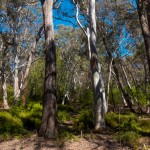Big old trees grow faster, making them vital carbon absorber
from the Conversation ( where would we be without The Conversation?)
 The linked article has ramifications for the current forest management methods and choices about what to log or not. The piece also reminds us all of the importance of all trees, not only for shade and green infrastructure benefits, but also as carbon sinks.
The linked article has ramifications for the current forest management methods and choices about what to log or not. The piece also reminds us all of the importance of all trees, not only for shade and green infrastructure benefits, but also as carbon sinks.
While becoming carbon neutral must be the top priority, it remains that trees are part of the adaptation processes of dealing with some of the carbon in our atmosphere. This points to the need to increase our urban forests and to ensure that new developments include more than adequate trees to deal with heat island effects, to provide for increase health and wellbeing and to be part of city-wide urban carbon sinks.
Researchers have looked into the growth of larger trees and their role as carbon sinks. The last paragraphs says it all:
As we now know that the biggest trees are the most valuable as both carbon stores and carbon sinks. If a manager’s goal is to maximise carbon uptake, then maintaining larger trees may be an efficient way to do so.
Native forests, in terms of their value as carbon storage, significantly outweigh their value as pulp and timber. When you add that to the value of biodiversity and water, it’s pretty clear what forest policy should be.